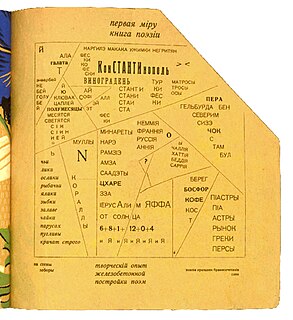
Concrete poetry is an arrangement of linguistic elements in which the typographical effect is more important in conveying meaning than verbal significance. It is sometimes referred to as visual poetry, a term that has now developed a distinct meaning of its own. Concrete poetry relates more to the visual than to the verbal arts although there is a considerable overlap in the kind of product to which it refers. Historically, however, concrete poetry has developed from a long tradition of shaped or patterned poems in which the words are arranged in such a way as to depict their subject.
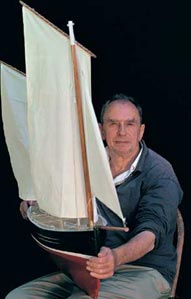
Ian Hamilton Finlay, CBE was a Scottish poet, writer, artist and gardener.
Biggar is a town and former burgh in South Lanarkshire, Scotland, in the Southern Uplands near the River Clyde on the A702. The closest towns are Lanark and Peebles.
Fulcrum Press was founded in London in the mid-1960s by medical student Stuart Montgomery and his wife Deirdre. Montgomery later became an eminent psychiatrist and expert in depression. Earning a reputation as the premier small press of the late 1960s to early '70s, Fulcrum published major American and British poets in the modernist and the avant-garde traditions in carefully designed books on good paper. The Fulcrum Press made a significant contribution to the British Poetry Revival and was one of the best known little presses of the period, recognized for publishing the works of Modernist poets including Ezra Pound, Basil Bunting, Allen Ginsberg and Roy Fisher.

Picturesque is an aesthetic ideal introduced into English cultural debate in 1782 by William Gilpin in Observations on the River Wye, and Several Parts of South Wales, etc. Relative Chiefly to Picturesque Beauty; made in the Summer of the Year 1770, a practical book which instructed England's leisured travellers to examine "the face of a country by the rules of picturesque beauty". Picturesque, along with the aesthetic and cultural strands of Gothic and Celticism, was a part of the emerging Romantic sensibility of the 18th century.
Christopher Hall is a British sculptor, born in 1942 in Nottingham, England, and now living in Scotland.
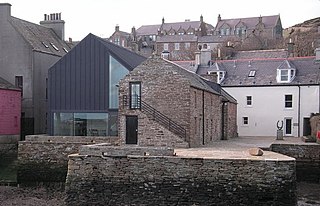
The Pier Arts Centre is an art gallery and museum in Stromness, Orkney, Scotland. It was established in 1979 to provide a home for an important collection of fine art donated to "be held in trust for Orkney" by the author, peace activist and philanthropist Margaret Gardiner (1904–2005). Alongside the permanent collection the Centre curates a year-round programme of changing exhibitions and events.

Painshill, near Cobham, Surrey, England, is one of the finest remaining examples of an 18th-century English landscape park. It was designed and created between 1738 and 1773 by Charles Hamilton. The original house built in the park by Hamilton has since been demolished.
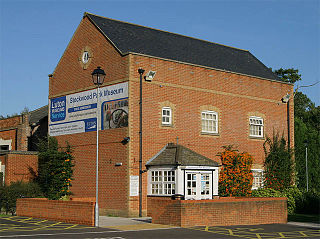
Stockwood Discovery Centre, formerly known as Stockwood Craft Museum, is one of two free admission museums situated in Luton. The museums in Luton are a part of a charitable trust, Luton Culture.
Moschatel Press is a small press publisher producing artist's books and poetry collections. It was founded in Nailsworth, Gloucestershire, in 1973, by the artist Laurie Clark and the Scottish poet Thomas A. Clark and moved to Pittenweem, Fife in 2002. The Press "is named after adoxa moschatellina, a plant known locally as Town Clock for its four-way green flower heads, with a fifth flower facing the sky." Their main line is in "publishing minimal texts, visual poetry and the like in small neat booklets and postcards."
Kate Felus is a designed-landscape historian. She studied at the University of Warwick and the University of Bristol. Her specialist subject area is the social history of 18th-century gardens and their buildings.
Reaktion Books is an independent book publisher based in Islington, London, England. It was founded in 1985 in Edinburgh, Scotland, and moved to London in 1987. Reaktion originally focused on the fields of art, architecture, and design. In recent years it has broadened to include more areas and also publishes series of books.
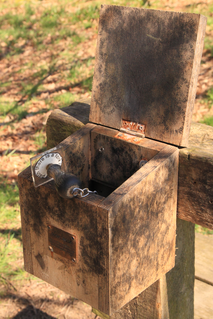
Alec Finlay is a Scottish-born artist currently based in Edinburgh. He is a son of Sue Finlay and Ian Hamilton Finlay. Finlay's work takes various forms and media, including poetry, sculpture, collage, audio-visual, neon, and new technologies; often it reflects on human engagement with landscape.

The Inventory of Gardens and Designed Landscapes in Scotland is a listing of gardens and designed landscapes of national artistic and/or historical significance, in Scotland. The Inventory was originally compiled in 1987, although it is a continually evolving list. From 1991 it was maintained by Historic Scotland and Scottish Natural Heritage, and is now updated by a dedicated team within Historic Environment Scotland. As of 2016 the Inventory includes over 300 sites across Scotland.
William Martin is an Australian garden designer. His garden Wigandia in south west Victoria at Noorat was twice voted Australia's best garden.
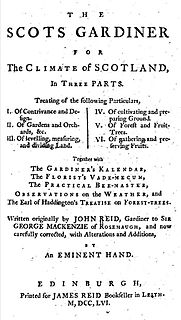
Gardening in Scotland, the design of planned spaces set aside for the display, cultivation, and enjoyment of plants and other forms of nature in Scotland began in the Middle Ages.
Allan Pollok-Morris MSC FRSA is a documentary photographer, bookbinder and publisher.
Margot Sandeman was a Scottish painter, close friend of Joan Eardley and long-time collaborator with poet Ian Hamilton Finlay.
Little Sparta is a British band which was formed in the early 2000s by Alan D. Boyd and named after the garden of the artist Ian Hamilton Finlay. Over a number of years the band has changed personnel as their sound has developed. The current line-up is Alan D. Boyd on guitar, Scott Skinner on drums and Susie Honeyman on violin. Their first recordings were released on Fire Records and were collaborations with Scottish poet Gerry Mitchell. Many of these recordings received critical acclaim from the likes of Pitchfork and Drowned in Sound. Later recordings have been released on the Grey Gallery label, started by Susie Honeyman.











